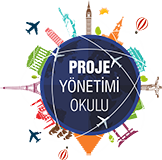How AI Is Changing the Way We Learn: A Beginner’s Guide

Artificial Intelligence, or AI, is no longer solely the creation of science fiction. It leads the charge in educational innovation and is reconfiguring the way we teach and learn. AI opens up innovative ways for personalized learning experiences, automates regular administrative tasks, and bridges gaps in accessibility. The beginner‘s guide covers exciting possibilities and various challenges of AI in learning.
What Is AI in Education?
AI in education employs artificial intelligence technologies in order to innovate in teaching and learning, as well as administrative processes. Such technologies perform data analysis, adapt to individual needs, and build dynamic learning environments.
Imagine an app tracking your progress, understanding your weaknesses, and thus pitching lessons accordingly. That‘s magic from AI. This is powerful in tools like Google’s Socratic or Duolingo, enabling users to grasp complicated learning in the most intuitive and engaging way.
How AI Improves Learning: Key Applications
1. Personal Learning Paths
AI personalizes learning content for the different learning styles and speeds. The AI-powered systems assess user interaction and performance, acting upon that by suggesting further improvements.
Example: Khan Academy uses machine learning to recommend lessons to students based on mastery.
2. Virtual Tutors and Assistants
AI tutors provide students with instant feedback, while mimicking one-on-one interactions. Virtual assistants, such as ChatGPT, also support students in problem-solving and brainstorming.
Internal Link Opportunity: Check out our Top AI Tools for Students guide for more great resources to facilitate productive study habits.
3. Automated Grading Systems
AI saves educators from the burden of manually grading each assignment. With tools like Gradescope, essays and exams can be graded automatically, without any loss of consistency.
4. Improved Access
AI makes learning inclusive by providing text-to-speech, screen readers, and instantaneous translation. Students with disabilities or language barriers can now access educational content with ease.
Benefits of AI in Education
The integration of AI into the learning systems has several benefits:
Efficiency and Time-Saving: The time used in administrative tasks like grading and attendance tracking is reduced to a minimum.
Scalability: AI-powered platforms like Coursera can facilitate quality education to millions of people around the world.
Interactive Learning: Gamified AI applications foster deeper engagement, making learning enjoyable.
External Link Opportunity: Learn how gamified education works in this EducationNext article.
Case Studies on Real World Successes Language Learning at Duolingo Millions of users study with Duolingo‘s AI-powered system, which personalizes lessons based on accuracy and repetition.
AI in Higher Education Institutions such as the University of Southern California implemented AI-powered chatbots to support students’ inquiries 24/7.
Bridging Gaps in Developing Nations Platforms such as edX and UNESCO‘s initiatives are implementing AI to bring affordable and accessible education to areas that are struggling most.
Challenges and Ethical Considerations
Despite its many advantages, AI in education has major challenges to overcome:
Data Protection and Privacy Large-scale collection and storage of students’ information invite data threats and misuse. Platforms are supposed to comply with data protection regulations, such as GDPR.
Bias in AI Systems Algorithms and systems of AI may support biases by accident in educational content or assessments.
Implementation Cost A majority of schools and institutions in countries of the developing world find this difficult to implement due to a lack of available infrastructure.
Internal Link Opportunity: Find out how to overcome Digital Inequality in Education with our focused article.
How Students and Educators Can Leverage AI
For Students:
- Use grammar-improvement software like Grammarly.
- Prepare for exams with different studying programs that leverage AI, such as Quizlet.
- Consider AI-powered productivity apps like Notion AI, which can increase students’ ability to complete tasks and take notes.
For Educators:
- Automate grading with tools such as Gradescope.
- Use AI-powered analytics to keep a tab on the performance of students.
- Achieve higher levels of engagement from students through virtual–reality-based AI applications.
Future of AI in Education
As AI keeps developing further, its role in education can only increase. Here‘s what the future holds:
Virtual Reality: AI-powered VR/AR experience will further plunge students into simulated worlds for experiential learning.
Predictive Analytics: AI will predict the performance of students and spot at-risk learners early on in the process.
Lifelong Learning: AI will give lifelong learners exactly that-opportunities to build skills continuously.
External Resource: For a general overview of the phenomenon in a global context, refer to the UNESCO Report on AI in Education.
Conclusion: New Era of Learning
AI has indeed revolutionized education by making it accessible, personalized, and effective. While there are still challenges, opportunities provided by AI outnumber its own shortcomings. Be it students or educators, embracing these AI tools leads to better learning experiences and outcomes.
To learn more about modern educational trends and tools, check out our other post on Techniques for Effective Online Learning.
This long-form version provides the fullest possible treatment of the topic while allowing for SEO optimization with relevant target keywords such as “AI in education,” “personalized learning,” and “virtual tutors.” Internal and external linking enhances reader engagement further and bolsters credibility, making it both information-rich and actionable.







